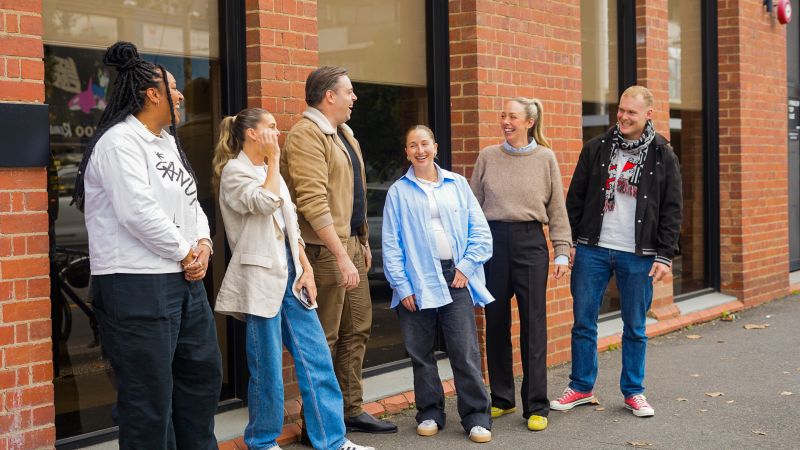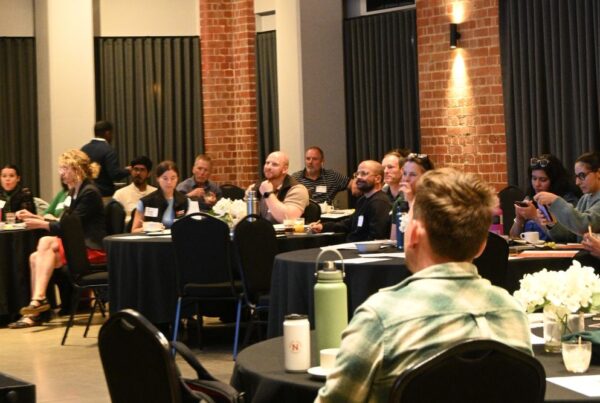
The modern workplace is constantly evolving, and with it comes innovative ways to improve productivity and employee well-being. One such approach gaining popularity is the walking meeting, a refreshing alternative to traditional office discussions. Unlike conventional sit-down meetings, this approach encourages movement, boosts creativity, and fosters collaboration in a more relaxed setting. Integrating walking meetings into your work routine can enhance your physical health and workplace engagement.
With more organizations recognizing the risks of prolonged sitting and stagnant office environments, walking meetings provide an easy yet impactful way to encourage activity during the workday. Whether it’s a quick team check-in or a brainstorming session, incorporating movement into meetings can lead to more dynamic and productive discussions. In this article, United Co. explores the advantages of incorporating walking meetings into your routine and provides practical tips on making the most of them.
The Benefits of Walking Meetings
Replacing a seated discussion can introduce several advantages for both employees and businesses. Here’s why walking while talking can transform workplace interactions:
Boosts Physical Health
Sitting for prolonged hours is linked to numerous health risks, including poor circulation, back pain, and fatigue. Walking meetings help counteract these effects by promoting movement, improving cardiovascular health, and increasing overall energy levels. Even a short 20-minute walk can contribute to a more active and healthier workday, reducing the likelihood of long-term health issues associated with sedentary work habits.
Enhances Creativity & Problem-Solving
Movement stimulates brain activity and enhances creative thinking. Studies show that walking can improve cognitive function and encourage out-of-the-box ideas. This approach can create an environment where fresh perspectives and innovative solutions can emerge more naturally. Many well-known business leaders, including Steve Jobs and Mark Zuckerberg, have used walking meetings as a tool for brainstorming and deep discussions.
Increases Collaboration & Engagement
The informal nature of a walking meeting makes discussions feel more open and engaging. Walking side by side rather than sitting across a desk reduces hierarchical barriers, fostering a sense of equality and encouraging honest, productive conversations. Employees often feel more comfortable sharing their thoughts in a relaxed setting, leading to stronger teamwork and collaboration.
Improves Mood & Reduces Stress
Exercise is known to release endorphins—natural mood boosters that help alleviate stress and anxiety. Walking meetings provide an opportunity to step away from screens, breathe in fresh air, and return to work feeling refreshed and motivated. Walking in green spaces or natural environments can further enhance relaxation and mental clarity, making employees more engaged and present.
Encourages Time Efficiency
Sitting in a conference room can sometimes lead to long, unfocused discussions. A walking meeting helps keep conversations concise and goal-oriented, as walking naturally encourages participants to stay on track and reach decisions more efficiently. Employees can discuss key points quickly while staying engaged, making walking meetings a great option for busy professionals.
Read More About Mastering the Parking Lot Technique for Productive Meetings
How to Plan an Effective Walking Meeting
To ensure a walking meeting is productive and enjoyable, consider the following steps:
1. Choose a Suitable Route
Selecting the right location is crucial for a successful walking meeting. Opt for a safe and accessible route, such as a nearby park, a quiet street, or an indoor walking track. Consider factors like weather conditions, noise levels, and accessibility to ensure a smooth experience for all participants. If walking outdoors isn’t an option, an indoor track or even a large office space can work well.
2. Set a Clear Agenda
Just like a traditional meeting, a walking meeting should have a defined agenda to keep discussions focused. Outline key discussion points and goals beforehand. For meetings where note-taking is necessary, voice recording apps or digital tools can be used to capture important insights while walking. Keep the topics relevant and concise to ensure a productive discussion without distractions.
3. Keep Group Sizes Manageable
The ideal walking meeting includes two to four participants. This ensures everyone can actively participate without difficulty in communication. For larger meetings, consider breaking into smaller groups or rotating participants throughout the walk. If a larger discussion is needed, designate a meeting point where the group can gather at the end of the walk to review key takeaways.
4. Dress Comfortably & Be Mindful of Pace
Encourage participants to wear comfortable shoes and dress appropriately for the weather. The pace should be steady yet relaxed to accommodate all attendees, ensuring that discussions remain productive rather than physically strenuous. A comfortable walking speed ensures that participants can focus on the conversation rather than on keeping up with the pace.
5. Incorporate Walking Meetings into Workplace Culture
For maximum impact, businesses should integrate walking meetings into their regular work routines. Managers and team leaders can lead by example, scheduling walking meetings for brainstorming sessions, one-on-one check-ins, or casual team updates. By normalizing this practice, companies can create a culture that prioritizes wellness and engagement. Encouraging employees to opt for a walking meeting instead of a coffee break can be another way to integrate movement into the workday.
Read More About How to Boost Workplace Wellness with Healthy Snacks at the Office
When to Use Walking Meetings (and When Not To)
While walking meetings offer numerous benefits, they are best suited for certain types of discussions. Here’s when they work best and when to opt for a traditional setup:
Best for:
- Brainstorming sessions where creativity is encouraged
- One-on-one meetings, performance check-ins, or mentoring sessions
- Team updates and status reviews that don’t require screens or documents
- Problem-solving discussions that benefit from movement and fresh air
Not ideal for:
- Meetings that require detailed note-taking or document review
- Conference calls or virtual meetings that need screen-sharing
- Formal presentations that involve slides and visuals
- Sensitive discussions that require privacy and discretion
Read More About 5 Trends that Will Shape the Future of Corporate Meetings
A walking meeting is more than just a trend, it’s a practical way to enhance productivity, creativity, and workplace well-being. By stepping away from traditional seated meetings and incorporating movement into discussions, businesses can foster more engaged teams, healthier employees, and more dynamic conversations.
If you’re looking for a work environment that encourages innovation and well-being, United Co. offers flexible workspaces and meeting spaces designed for professionals who value productivity and collaboration. With access to green spaces and modern office amenities, United Co. provides the perfect setting for teams looking to embrace new ways of working.
Make walking meetings a regular part of your work routine and experience the benefits of a more active, engaged, and inspired workday. Explore United Co.’s flexible meeting spaces today and create a healthier and more productive work environment.




